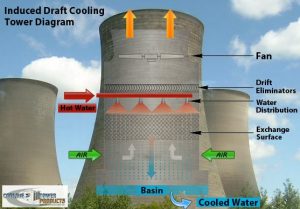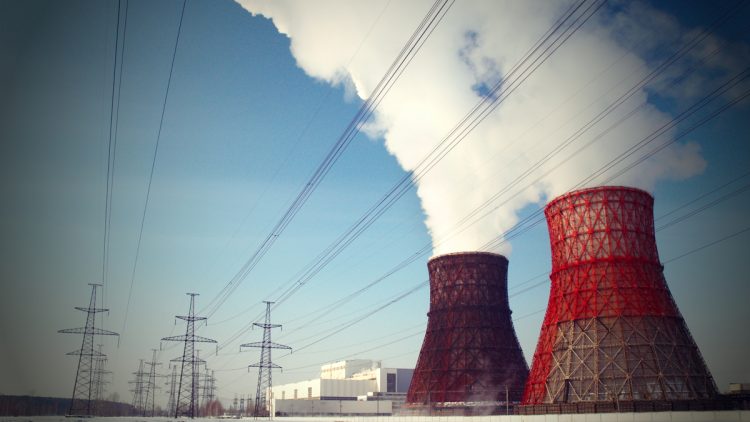What Is A Natural Draft Cooling Tower?
Natural draft cooling towers operate on the stack effect, which causes hot air to rise within the tower.
Natural Draft Cooling Tower Features
Natural draft cooling towers are frequently used in power plants. The tower’s stack effect is responsible for producing the necessary air stream volume for cooling. These models offer a unique economic advantage in that the energy requirement is extremely low. This means, of course, that operating costs are minimal.
The large distance found between the air inlet and outlet avoids any recirculation of warm air, which could lead to a less efficient operation. The lack of moving parts make this model so reliable and inexpensive when infrequent maintenance needs occur.
Here are other advantages offered by natural draft towers:
- High degree of reliability.
- Low maintenance costs.
- Low energy costs.
- Efficient components.
Forced Draft And Induced Draft Cooling Towers

There are many benefits of using a forced draft cooling tower. And that is exactly why so many industrial plants opt for this model over the other options. Forced draft cooling towers are very powerful and affordable at the same time. These models will remove low-potential heat that is generated in the production process. A counterflow of air combined with hot water results in a transfer of heat in the cooling fill. Paper and chemical industry plants often prefer to used forced draft cooling towers.
So, how do forced draft models differ from induced draft towers? Induced draft versions feature a fan at the top of tower, pulling the air upward. Fans in induced draft cooling towers then induce the hot, moist air out of the discharge. A powerful exit air velocity reduces any possible recirculation within the tower as the end result. That is the main goal for these models: to eliminate the possibility of any discharged air flowing back into the air intake area.
Induced draft implies an inlet fan placed atop the tower, which creates low pressure. Forced draft, meanwhile, features an exhaust fan at the base of tower. This will then create the overpressure. Both centrifugal and axial fans can be used in forced draft models.
Induced Draft Features
- Low-absorbed capacity.
- Higher noise level than forced draft.
- Humid air stream drive.
- Requires little space for installation.
Forced Draft Features
- Ease of maintenance.
- Lower noise levels.
- Dry air stream drive.
- Low-absorbed capacity.
Cooling Tower Installation, Replacement, & Refurbishment in Arizona & Nevada
Our team offers complete cooling tower refurbishment that will save your company tens of thousands of dollars over buying and installing new cooling towers. Cooling tower refurbishment and rebuilding adds about another 15 years of life to your equipment and helps you get your money’s worth out of your original investment in your cooling tower or property. We offer cooling tower installation, replacement, and refurbishment in Arizona and Nevada. We also sell other cooling tower parts and products.

